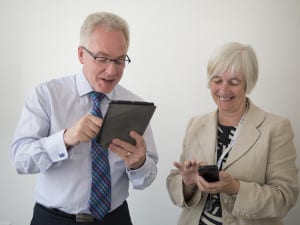In a recent blog post marking the 25th anniversary of the Web, Jane Hart, founder of the Centre for Learning & Performance Technologies, observed that our social networks built on things like Facebook, Twitter, LinkedIn or Google+ have become part of our professional lives as they let us make global connections with other like-minded individuals. This professional network, she says, becomes a Personal Learning Network (PLN).
In another post she notes that this kind of social learning often happens below the radar of ICT and learning & development departments This is partly because access to public social media may be blocked (for example see previous post about Yammer) and partly because people tend not to like the way enterprise-wide social initiatives prescribe which tools they must use for sharing and collaborating. Neither do they like their activities being tracked and scrutinised by others, who may have no idea what it means to be social.
As a result, many in the workforce are not exploiting the enormous potential of PLNs to support continuous learning and development, which most would agree is fundamental requirement for the 21st century worker.
So we at IRISS were very pleased to collaborate with colleagues in NHS Education for Scotland to create Kristina, a model of how someone working in health and social care can create and benefit from a personal learning network.
Today Kristina makes her debut in this short animation showing how easy she found it to get started. You can do it too.
Malcolm Wright, NES Chief Executive, talks about the social use of knowledge:
Alison Petch, IRISS Director, explains why we created Kristina:
